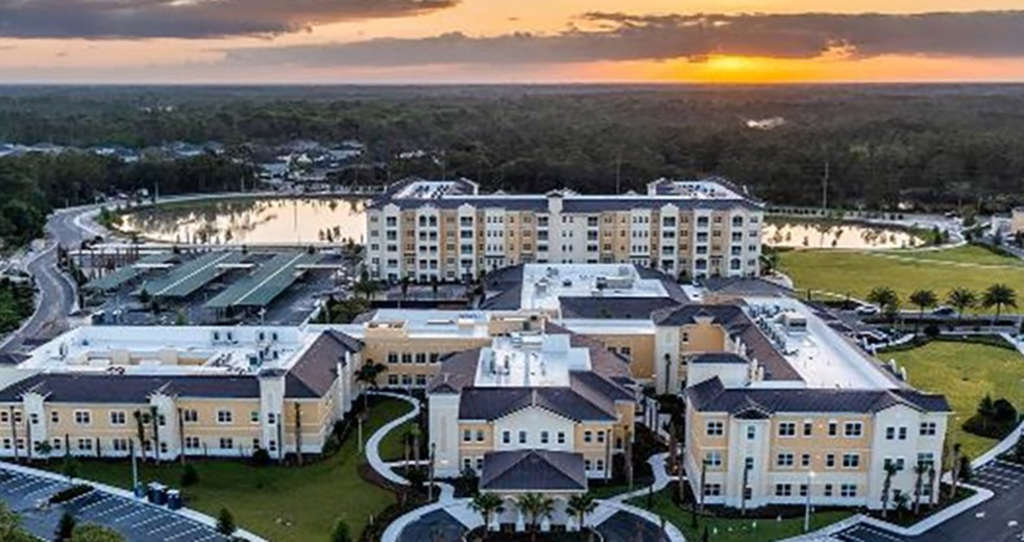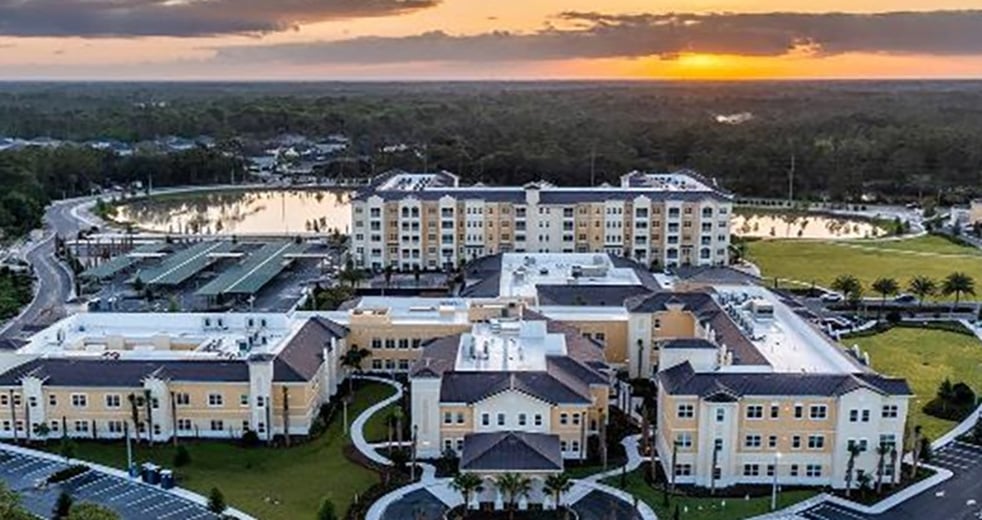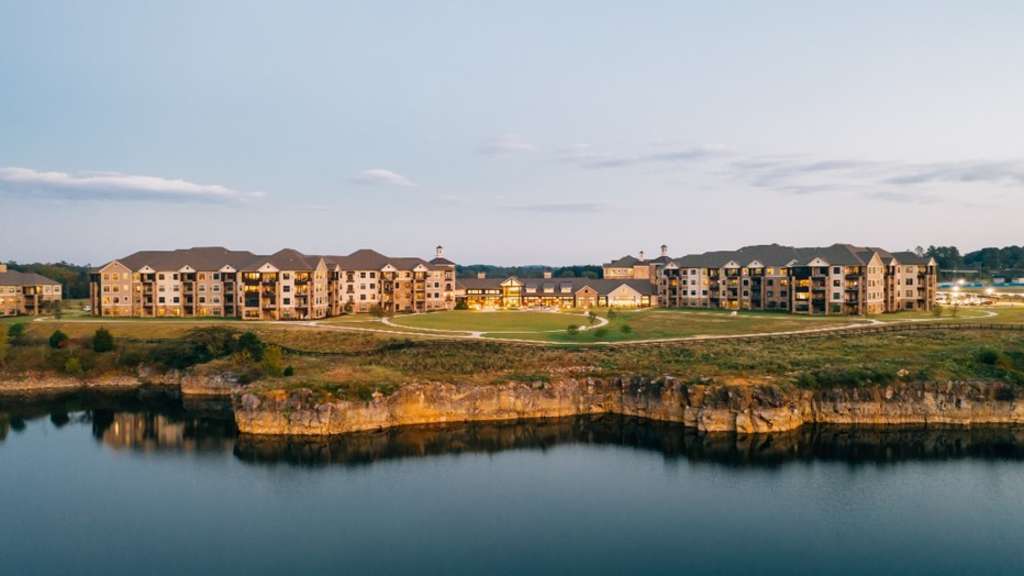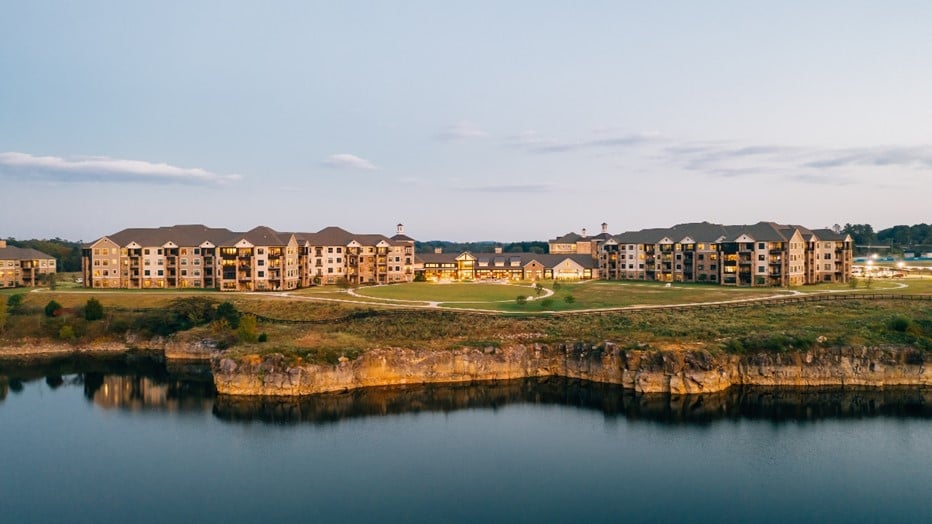Lodging Strategy: The University Retirement Community (URC)*
It is a well-known fact that the COVID pandemic has worsened social isolation among older Americans as they lost their usual connections, services, and social support. Thus, the pandemic highlights the importance of social connection with its significant impact on both community-living older adults as well as those living in long-term care facilities.
Social connection is critical not only for physical and mental health but for survival as well. Social Isolation is estimated to impact up to 40% of adults aged 60 and older in the US (1). No wonder, social connectedness is now a key determinant of Health (2).
It would make perfect sense to find a solution to this major problem. That solution would be to consider and promote a University Retirement Community (URC) that will fulfill the needs of the increasing number of retiring baby boomers.
The URC concept is getting more popularity to cope with that demand. There are lifestyle needs such as convenient onsite services such as healthcare, wellness, dining, sports such as (e.g., Golf), and advanced learning opportunities with selective course enrollment. They would be also resources for coaching, mentoring, and counseling students by using the skills they developed over decades of professional expertise before retirement.
Those seniors are mostly educated with high degrees, health-conscious and physically active category of retirees looking to enjoy life to the fullest with easy access to their daily needs which can be all accommodated in URC’s. Now, it would be mutually beneficial to have a partnership between the nearby University Campus and the URC. This can be accomplished via a third party (a developer or an investor) that purchases the land, develops it, manages the facilities, and coordinates the financial relationship between the URC and the University.
This model was found to be financially profitable and beneficial. There are many URC successful examples across the nation in Arizona, Orlando, Florida, Rome, and Georgia for example. They all have various activities such as walking, biking, and outdoor sports. Some URC’s offer a Pet-Friendly campus with virtual tours to attract retirees!
Examples of activities include, an intergenerational chess program, a youthful vibe for older adults, a colored pencil drawing workshop, gardening classes, yoga classes, and the list goes on. This was proved to keep the brain functioning well through healthy social and physical activities. URC’s would provide social support through interactions with friends and other residents and attend common classes and meetings. The URC is about enhancing the quality of life of a very vulnerable population the retiring baby boomers.
URC’s have amenities to enjoy that would fulfill their physical and mental well-being needs. For example, on-site healthcare services such as ProntoCare (6) would be a major item in attracting and maintaining retirees at URC’s. As the aging population has increased healthcare needs such as primary care, dental services, Audiology services, Podiatry services, lab services, massage services and even veterinary services for their pets!
The design should be diverse to accommodate the various needs of the studio apartments, two -to three-bedroom bed apartments, villas, homes, memory units ..etc. Monthly fees for a single person can vary from $4000-$8000 or more depending on the choice of residence.
Provided services include:
- Living with 24/7. on-site security and 24-hour emergency response system. A flexible dining account is offered.
- learning. Via events/activities and classes held on campus. Residents can access online classes with scheduled transportation, shopping, banking, prayers, and outdoor dining.
- Climate-controlled storage space with assigned parking space.
Amenities
For residents with long-term care, private accommodations in assisted living, and memory care with skilled nursing are available.
- Dining sit-in and takeaway options are available in addition to catering.
- Fitness: personal trainers are available on-site to help in the fitness center and indoor lap pools, whirlpools, and lockers. Residents can take scheduled group classes such as tai-choir one-on-one sessions with a personal trainer.
- Onsite Bank, ATM, Postal services, and Salon Services.
Creativity
Residents can participate in creative art studios as their engagement in lifelong learning with other activities gives them a sense of fulfillment and value.
One additional aspect of enhancing their lifestyle is for example a healthy heart culinary program that would include healthy choices. Brain boosts to preserve and strengthen cognitive functions. Gluten-free food for those with gluten intolerance. Low Carbohydrate diet for diabetics and a low salt diet for those with high blood pressure. The URC would provide peace of mind as residents would love the easy transition into their new enhanced lifestyle living. There is a definite growing need especially in States that have good weather, and outdoor activities that are near to universities which will bring lots of opportunities to developers/investors with benefits to both the University and the URC including profitability, job creation, economic boost and most importantly providing enhanced lifestyle quality to the ever-growing number of retirees.
*Copyright Andrew Carle - Adjunct Faculty, Senior Living Administration.
Master's in Aging & Health Georgetown University
References
- Chen Y.R., Schulz P.J. The Effect of Information Communication Technology Interventions on Reducing Social Isolation in the Elderly: A Systematic Review. J. Med. Internet Res. 2016;18:e18. doi: 10.2196/jmir.4596. [PMC free article]
- MacLeod S., Kraemer S., Fellows A., Albright L., Ruiz J., McGinn M., Schaeffer J., Yeh C. Defining the Personal Determinants of Health for Older Adults. J. Bhav. Health. 2021;10:1–6. [Google Scholar]
- Musich S., Wang S.S., Schaeffer J.A., Kraemer S., Wicker E., Yeh C.S. The additive impact of multiple psychosocial protective factors on selected health outcomes among older adults. Geriatr. Nurs. 2021;42:502–508.
- DeMicco, F, Pizam, A, Guzman, J & Rahav, S. (2021). The benefits of university-based retirement communities: Opportunities for lodging, Hospitality.net.
- Resnick, B., Galik, E., Holmes, S., & McPherson, R. (2021). The impact of COVID-19 in an assisted living community. Geriatric nursing (New York, N.Y.), 42(5), 1151– 1155. Sadownik, S. (2022), University-Based Retirement Communities (UBRC) in Canada. Advance. Preprint. https://doi.org/10.31124/advance.20459886.v1 Smith, E. K., Rozek, E. K., & Moore, K. D. (2014). Creating SPOTs for successful aging: Strengthening the case for developing university-based retirement communities using social-physical place over time theory. Journal of Housing for the Elderly, 28(1), 21-40. Vanta, B. (2023). University-based retirement communities: A guide. Assistedliving.org. https://www.assistedliving.org/universi ty-based-retirement-comm
-
https://www.hospitalitynet.org/opinion/4103956.html
Onsite Medical Clinic: Franchise Model for a Lodging Market Competitive Advantage.
Marcus, J. (2019). New college communities are custom-built for retirees. AARP https://www.aarp.org/retirement/plan ning-for-retirement/info-2019/collegeswith-retirement-communities.html Maxfield, M., Beagley, L., Peckham, A., Guest, M. A., Giasson, H. L., Byrd, D. R., ... & Coon, D. W. (2023). Mirabella at Arizona State University: A Case Example in Innovation at a University Based Retirement Community. Journal of Aging and Environment, 1-20. Montepare, J. M., Farah, K. S., Doyle, A., & Dixon, J. (2019). Becoming an Age Friendly University (AFU): Integrating a retirement community on campus. Gerontology & Geriatrics Education, 40(2), 179-193.





